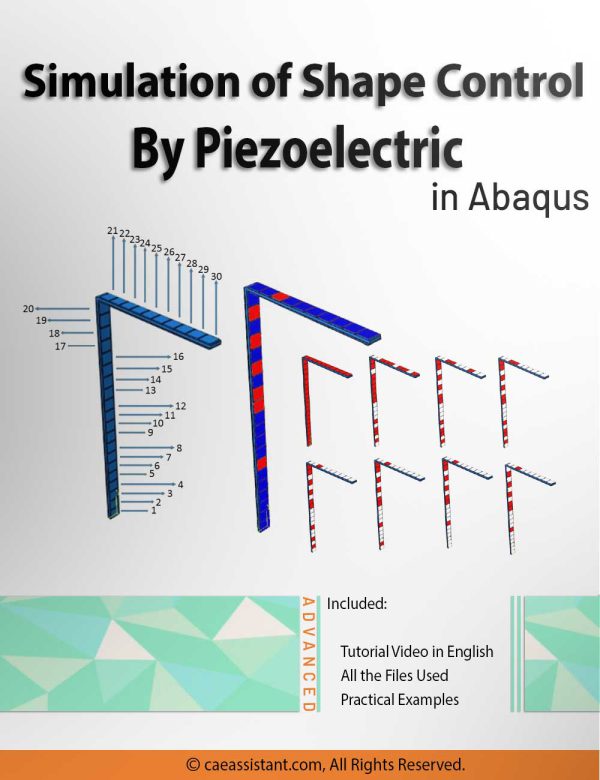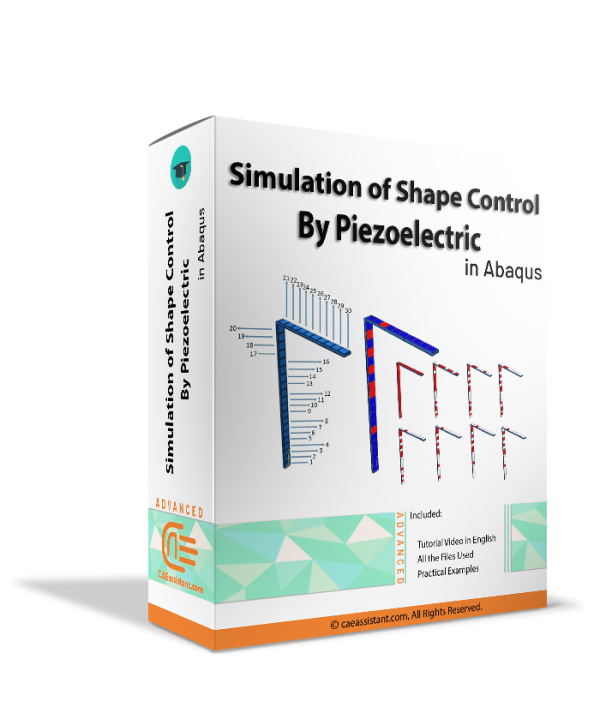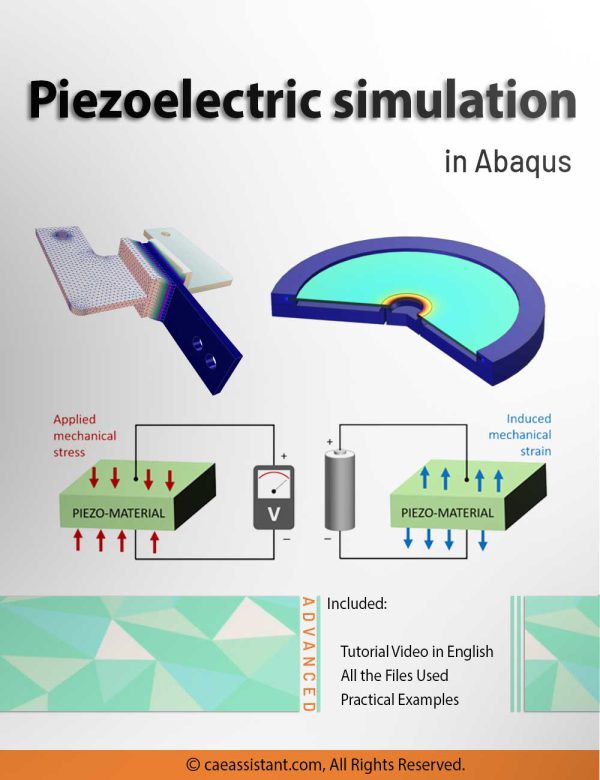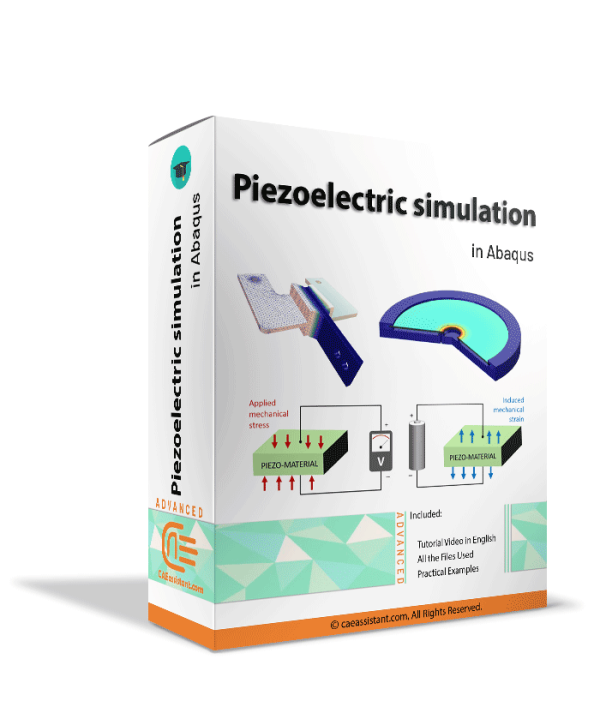JAVAD
Simulation of shape control by piezoelectric in Abaqus
Piezoelectricity refers to the accumulation of electric charge in certain solid materials due to mechanical pressure. This phenomenon, known as the piezoelectric effect, is reversible. Some materials exhibit direct piezoelectricity, which involves the internal production of electric charge through the application of mechanical force, while others exhibit the inverse piezoelectric effect.
By harnessing piezoelectrics, it becomes possible to control the geometrical changes of objects in response to external forces. However, it is important to note that utilizing this property in all situations would not be cost-effective. Therefore, it is more practical to use piezoelectric structures selectively, specifically in special applications. One approach to determining the optimal placement of piezoelectric elements for controlling the geometric shape of various objects under internal or external forces involves utilizing the Abaqus and MATLAB software linkage. This software combination, along with optimization algorithms such as the particle swarm optimization algorithm, can be employed to achieve the desired objectives. By leveraging these tools and data, the primary goal of controlling object shape can be successfully accomplished.
In this training package, you will learn about piezoelectric and piezoelectric modeling in Abaqus, the particle swarm optimization algorithm, linking Abaqus and MATLAB, and how to use these tools for shape control.
Notice: Software files and A full PDF guideline (Problem description, theory, ...) are available; Videos are coming soon.
Piezoelectric simulation in Abaqus
Piezoelectric materials exhibit a unique property known as piezoelectricity, where they can generate electric charges when subjected to mechanical stress or deformation, and conversely, deform when an electric field is applied. This phenomenon arises from their crystal structure, enabling the conversion of mechanical energy into electrical energy and vice versa.
Simulating piezoelectric materials is of great importance as it allows engineers to optimize the design and performance of devices and systems that utilize these materials. Through simulations, engineers can analyze factors like stress distribution, deformation, and electrical response, aiding in performance prediction and failure analysis. Simulations also enable the study of parameter sensitivity, understanding how changes in parameters impact piezoelectric devices. This information helps in making informed design decisions and optimizing the integration of piezoelectric components into larger systems. Furthermore, simulating piezoelectric materials reduces the need for physical prototypes, saving time and costs associated with experimental setups. It enhances the understanding and development of piezoelectric technology, facilitating its widespread application in various industries.
In this training package, you will learn what is a piezoelectric, types of piezoelectric, piezoelectric applications, and how to simulate piezoelectrics in Abaqus.
Select options
Coming soon...




